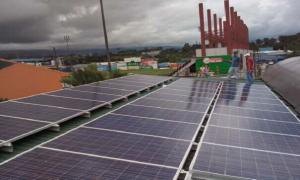Grid Tie Inverter Solar
Grid Tie Inverter Solar Related Searches
Led Light Bulbs For Ceiling Fixtures Led Lamps For Ceiling 42 In Ceiling Fan With Light Parts For Light Fixtures Light Projector For Christmas Grill With Led Light Bar Hanging Lights For Kitchen Bar Ceiling Lights For Sitting Room Ceiling Brackets For Lights Ceiling With Led LightsHot Searches
Aluminium Wire Mesh Manufacturers India Ceiling Fan Lowest Price Aluminium Scaffold Planks Sale Aluminium Walkway Mesh Prices Aluminum Bar Stock For Sale High Mast Light Price List Solar High Mast Light Specification High Mast Light Specification 6061 Aluminum Bar Stock Price Aluminum Bar Stock Price Stage Light Price Solar Inverter Fault Light Led Light Manufacturers Aluminum Round Bar Stock Sizes Aluminum Round Bar Stock Near Me Ceiling Fan Lowest Price Aluminum Flat Bar Stock Near Me Aluminum Bar Stock Sizes Aluminum Bar Stock Suppliers Aluminum Bar Stock Near MeGrid Tie Inverter Solar Supplier & Manufacturer from China
Okorder.com is a professional Grid Tie Inverter Solar supplier & manufacturer, offers integrated one-stop services including real-time quoting and online cargo tracking. We are funded by CNBM Group, a Fortune 500 enterprise and the largest Grid Tie Inverter Solar firm in China.Hot Products
FAQ
- The maximum power rating of a solar inverter typically depends on the specific model and manufacturer. It can range from a few hundred watts for small residential inverters to several megawatts for large-scale commercial or utility-grade inverters.
- Yes, there are noise considerations with a solar inverter. While solar inverters typically produce low levels of noise, it is important to ensure that the inverter is placed in a well-ventilated area to avoid any potential fan or cooling system noise. Additionally, some older models of inverters may produce a slight humming sound during operation, although newer models have significantly reduced this noise.
- When choosing the right brand of solar inverter, several factors should be considered. First, look for a brand with a good reputation and a track record of reliability. It's important to choose a brand that has been in the market for some time and has positive customer reviews. Additionally, consider the warranty and after-sales service provided by the brand. Look for a brand that offers a comprehensive warranty and has a strong customer support system in place. Finally, consider the specific requirements and features you need from the inverter, such as its power output, efficiency, and compatibility with your solar system. Comparing different brands based on these factors will help you make an informed decision and choose the right brand of solar inverter for your needs.
- A solar inverter is designed to handle variations in ambient temperature by incorporating temperature compensation algorithms. These algorithms adjust the inverter's performance parameters, such as voltage and frequency, based on temperature measurements. This ensures that the inverter operates optimally and efficiently across a wide range of temperature conditions, maintaining stable and reliable power conversion from the solar panels.
- Yes, a solar inverter can be used with solar trackers. Solar trackers are used to maximize the efficiency of solar panels by orienting them towards the sun. Solar inverters are responsible for converting the DC power generated by solar panels into usable AC power. Both components work together to optimize solar energy production.
- A solar inverter handles voltage unbalance in the grid by continuously monitoring the grid voltage levels. If it detects voltage unbalance, it adjusts the output power accordingly to maintain a balanced operation. This is achieved through internal control algorithms that ensure each phase of the grid receives the appropriate amount of power, correcting any imbalances and preventing potential damages to the solar inverter or the grid.
- The maximum output power of a solar inverter varies depending on the specific model and its capacity. However, typical residential solar inverters have a maximum output power ranging from 1 kilowatt (kW) to 10 kW, while commercial and utility-scale solar inverters can have maximum output powers exceeding several megawatts (MW).
- Yes, a solar inverter can be used in off-grid systems. In fact, it is an essential component of off-grid solar systems. The solar inverter is responsible for converting the DC power generated by the solar panels into AC power that can be used to run household appliances and charge batteries. This allows off-grid systems to store excess energy for use during periods of low sunlight, providing a reliable source of electricity even when disconnected from the grid.












































